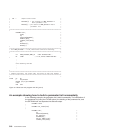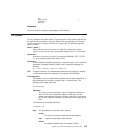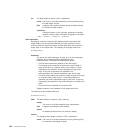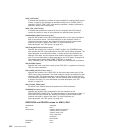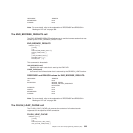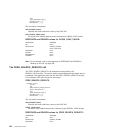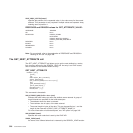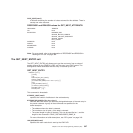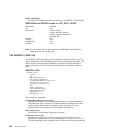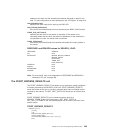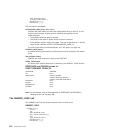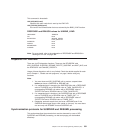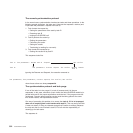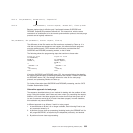VALUE_ARRAY_POSITION(name4)
specifies the position of the requested value, in the value array for the current
attribute. This parameter is only required if multiple values are expected. Array
indexing starts at position 1.
RESPONSE and REASON values for GET_ATTRIBUTE_VALUE:
RESPONSE REASON
OK None
EXCEPTION INVALID_TOKEN
NOTFOUND
INVALID_BUFFER_LENGTH
INVALID_CALLING_SEQUENCE
DISASTER None
INVALID None
KERNERROR None
PURGED None
Note: For more detail, refer to the explanation of RESPONSE and REASON in
“Making an XPI call” on page 308.
The GET_NEXT_ATTRIBUTE call
The GET_NEXT_ATTRIBUTE call allows you to get the next attribute in a series,
from an entry returned by the SEARCH_LDAP call. An entry is an LDAP record,
and an attribute is one element within an entry.
GET_NEXT_ATTRIBUTE
DFHDDAPX [CALL],
[CLEAR],
[IN,
FUNCTION(GET_NEXT_ATTRIBUTE),
SEARCH_TOKEN(name4),
LDAP_ATTRIBUTE_NAME(buffer-descriptor),]
[OUT,
[LDAP_RESPONSE(name4),]
[VALUE_COUNT(name4),]
RESPONSE(name1 | *),
REASON(name1 | *)]
This command is threadsafe.
LDAP_ATTRIBUTE_NAME(buffer-descriptor)
indicates the buffer where you want the attribute name returned. A group of
three fullwords are specified for the buffer-descriptor:
v The address where the data is returned.
v The maximum size in bytes, of the data returned.
v The actual length in bytes of the data. This can be specified as *, and the
length is then returned in DDAP_LDAP_ATTRIBUTE_NAME_N.
For more information on buffer-descriptors, see “XPI syntax” on page 319.
LDAP_RESPONSE(name4)
specifies the return code that is sent by the LDAP API.
SEARCH_TOKEN(name4)
the name of the fullword token that is returned by the SEARCH_LDAP function.
326 Customization Guide



